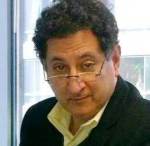Updated
Morocco’s Energy Strategy Attracts Global Attention – Jean R. AbiNader
International Players Drawn by Government’s Ambitious Program
I have just returned from visiting four cities: Milwaukee and Madison, Wisconsin, Chicago, Illinois, and Minneapolis, Minnesota, speaking on business opportunities sparked by the US-Morocco FTA.
Ironically, most of the attention focused on potential opportunities in renewable energies – a sector that is only tangentially impacted by the FTA, yet one that has captured the attention of the global industry, from providers of consumer and small-scale technologies to the manufacturers of large scale solar and wind facilities and equipment.
There is also interest rising in Morocco’s efforts to build an integrated LNG and gas-to-power plant with an import facility near the current coal-fired power station at Jorf Lasfar, along with a number of combined-cycle gas turbine power plants. The Minister of Energy, Abdelkader Amara, has just visited the US, meeting with industry leaders, taking a tour of several LNG facilities, and speaking to companies in several states. The visit was described as “very productive,” and it highlighted Morocco’s efforts to “enhance its commitment to green energy.”
Lahsen Amarof, head of the Ministry’s Natural Gas and Fossil Fuels Division, noted that “The project will be tendered as one integrated project through one tender. We expect to have a consortium with many companies [undertaking the project], including CCGT specialists and companies for the LNG part.”
The Interfax report also noted that “The project also includes the construction of a 400-km high-pressure pipeline connecting the LNG terminal to the existing Maghreb-Europe pipeline, which takes Algerian gas to Spain via Morocco, through Mohammedia, Kenitra and Dhar Doum. The scheme also includes the construction of pipelines to each of the projected power stations, and may be extended to underground gas storage facilities at a later date.”
As financing comes on line through a variety of public-private sector partnerships, companies will line up to take part in this estimated $4 billion project that is part of the overall shift in the energy profile of Morocco.
Solar Continues to Dominate the News
Scientific American is the latest magazine to take notice of what Morocco is doing, in a recent article on solar energy in the Middle East. The article concedes that Gulf investors such as the UAE, Saudi Arabia, and Qatar and energy importers like Morocco have markedly different rationales for investing in solar. While the Gulf producers are concerned with achieving the best value for their exports by reducing domestic consumption, Morocco is simply trying to reduce its expensive fossil fuels import bill and reach its climate change goals.
“Global consulting firm Ernst & Young, in its latest Cleantech Survey Report for MENA, ranked Saudi Arabia, UAE, Morocco and Jordan as having the greatest potential for renewable energy investment in the region, adding that ‘the opportunities to provide affordable and secure low-carbon energy are continuously expanding.’”
Solar energy has many benefits. It can then be used to meet other development needs, such as powering high-use desalination and waste/water treatment plants at lower cost and lower greenhouse gas emissions technology such as the CSP projects in Morocco.
The magazine pointed out that “As part of its 2009 National Energy Strategy, Morocco has pledged to bring online 6,000 MW of renewable energy — 42 percent of its installed capacity — from hydro, wind and solar resources by the end of the decade. Last year, officials told the Al-Hayat newspaper that the country would invest $11 billion in wind and solar over the next five years, allowing the country ‘to turn from an importer into an exporter of alternative energy by 2020.’”
In its latest Renewable Energy Country Attractiveness Index, published this month, Ernst & Young credited Morocco’s solar program for adhering to a “bold risk allocation strategy for such large-scale and complex projects.”
In related news, Italian firm Enel Green Power SpA, a well-known leader in renewable energy, announced the opening of an office in Morocco.
According to CEO Francesco Venturini, Morocco has emerged as a renewable “energy pioneer” in the region, outlining clear goals and providing the “regulatory framework” necessary for renewable development. “We have already set foot in the country, establishing a local headquarters, and now we are aiming to grow by installing megawatts and contributing to the achievement of the country’s ambitious energy targets,” Venturini told a business conference in Rabat, according to media reports.
At the current time, Enel has a number of tenders on its radar, including the most recent project of Morocco’s national utility ONEE for an 850MW wind project that has attracted prequalified bidders from a number of countries.
The bottom line is that Morocco is making good on its vision for the future and is securing the commitments and expertise needed to meet it energy and climate change goals.
